Magnetic Suspension System with Large Distance of 82 mm Using Persistent Current in Superconducting Coil
Abstract
:1. Introduction
2. Superconducting Magnetic Suspension System
2.1. Structure
2.2. Superconducting Coil and Persistent Current
2.3. Suspension Force by Superconducting Coil
2.4. Mutual Interaction between Superconducting Coil and Copper Coils
3. Magnetic Suspension Experiments and Discussions
3.1. Control System
3.2. Suspension Experiments
4. Summary
- (a)
- The persistent currents from 30 A to 60 A are useful for the suspension system;
- (b)
- The mutual interaction between the superconducting coil and the copper coils is not so large for the control current;
- (c)
- The slope (corresponding to the sensor gain), at a distance of 82 mm, is applicable to the suspension system.
- (d)
- The persistent current of 50 A is applied to the superconducting coil.
- (e)
- The experimental results show that the object succeeds at being suspended at a distance of 82 mm and continues to keep the suspension for more than 60 s.
- (f)
- During the suspension, the displacement is small at less than 0.5 mm, and the amplitude of the control current is less than 3 A.
Author Contributions
Funding
Institutional Review Board Statement
Informed Consent Statement
Data Availability Statement
Conflicts of Interest
References
- Mizuno, T.; Sekine, D.; Ishino, Y.; Takasaki, M. Proposal of Force Measurement Using Series Magnetic Suspension. In Proceedings of the 5th Annual Dynamic Systems and Control Conference Joint with 11th Motion and Vibration Conference, Fort Lauderdale, FL, USA, 17–19 October 2012; pp. 55–60. [Google Scholar]
- Kawamura, Y.; Mizota, T. Wind Tunnel Experiment of Bluff Body Aerodynamic Models Using a New Type of Magnetic Suspension and Balance System. J. Fluids Eng. 2013, 135, 101401. [Google Scholar] [CrossRef]
- Gonzalez-Ballestero, C.; Aspelmeyer, M.; Novotny, L.; Quidant, R.; Romero-Isart, O. Levitodynamics: Levitation and control of microscopic objects in vacuum. Science 2021, 374, 1–17. [Google Scholar] [CrossRef] [PubMed]
- Chrisinger, J.E.; Tilton, E.L.; Parkin, W.J.; Coffin, J.B.; Covert, E.E. Magnetic Suspension and Balance System for Wind Tunnel Application. J. R. Aeronaut. Soc. 1963, 635, 717–724. [Google Scholar] [CrossRef]
- Richmond, P.; Boyden, C.; Britcher, P.; Ping, T. Status of Wind Tunnel Magnetic Suspension Research. SAE Trans. 1985, 6, 769–777. [Google Scholar]
- Kawamura, Y.; Takenaga, T.; Oh, J.-B.; Takahashi, T.; Kwon, C.-K.; Mizota, T. Development of a low electric power 40 cm class magnetic suspension and balance system. J. Wind Eng. 2004, 1, 117–127. [Google Scholar] [CrossRef] [Green Version]
- Sawada, H.; Kunimatsu, T. Development of a 60cm Magnetic Suspension System. J. Jpn. Soc. Aeronaut. Space Sci. 2002, 580, 188–195. [Google Scholar]
- Hull, J.R.; Mulcahy TM Uherka, K.L.; Abboud, R.G. Low rotational drag in high-temperature superconducting bearings. IEEE Trans. Appl. Supercond. 1995, 2, 626–629. [Google Scholar] [CrossRef]
- Komori, M.; Kobayashi, H.; Kumamoto, M. Hybrid high Tc superconducting magnetic bearing (SMB) system with no bias currents. In Proceedings of the 6th International Symposium on Magnetic Bearings, Cambridge, MA, USA, 5–7 August 1998; pp. 214–223. [Google Scholar]
- Maruo, E.; Komori, M. A trial of superconducting magnetic levitation (SML) with superconducting coil. J. Jpn. Soc. Appl. Electromagn. Mech. 2011, 3, 79–82. [Google Scholar]
- Nakaya BKomori, M.; Asami, K.; Sakai, N. Dynamic Characteristics of Magnetically Levitated Conveyer Using High Tc SMB. IEEE Trans. Appl. Supercond. 2013, 3, 1–4. [Google Scholar]
- Takase, S.; Komori, M.; Nemoto, K.; Asami, K.; Sakai, N. Basic study on magnetic levitation system using superconducting coil. JSME Mech. Eng. J. 2015, 3, 1–8. [Google Scholar] [CrossRef] [Green Version]
- Igarashi, M.; Nemoto, K.; Okutomi, T.; Hirano, S.; Kuwano, K.; Kusada, S.; Terai, M.; Kuriyama, T.; Tosaka, T.; Tasaki, K.; et al. Persistent current HTS magnet for Maglev applications. Teion-Kougaku 2004, 12, 651–659. [Google Scholar] [CrossRef] [Green Version]
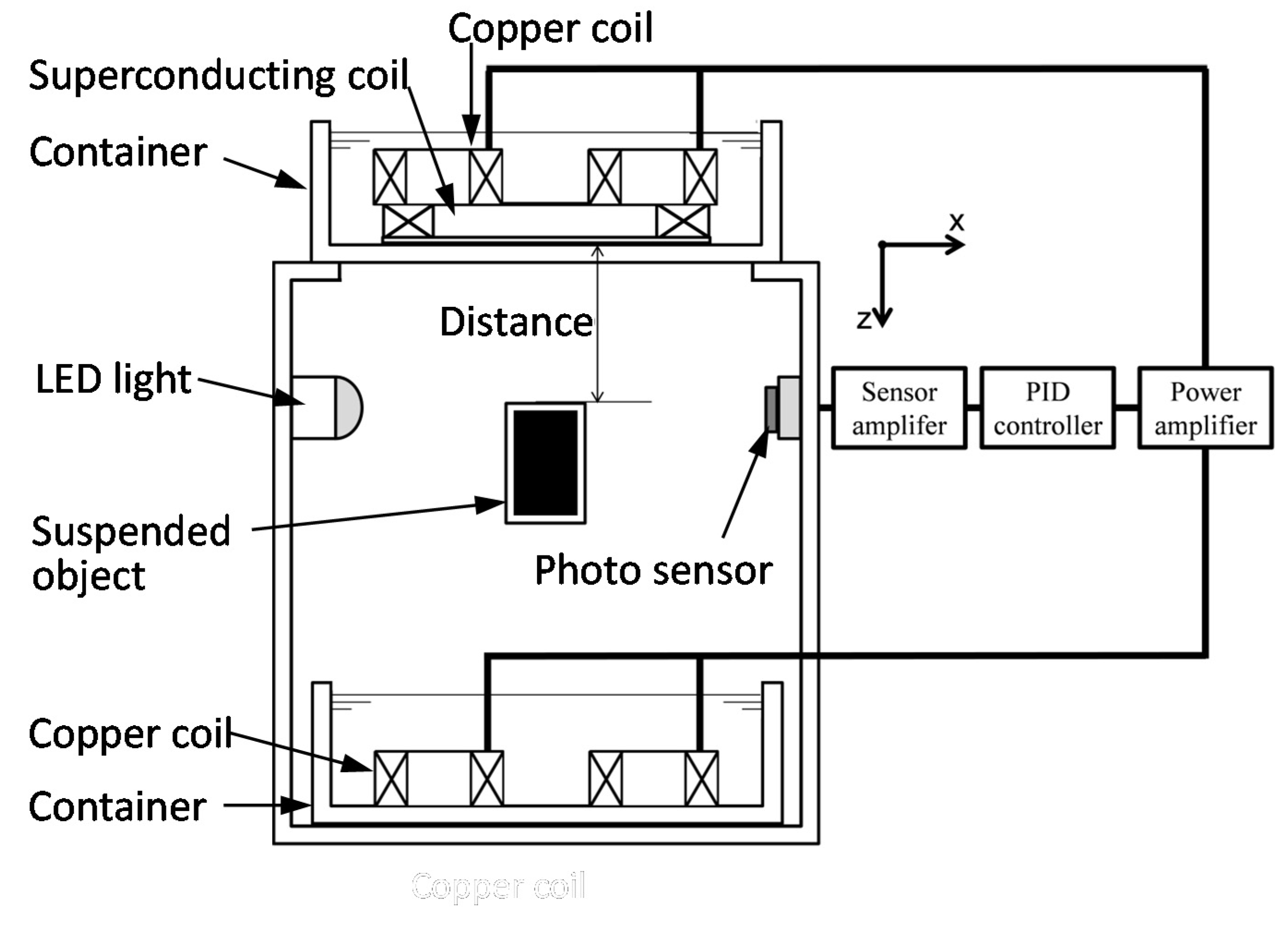

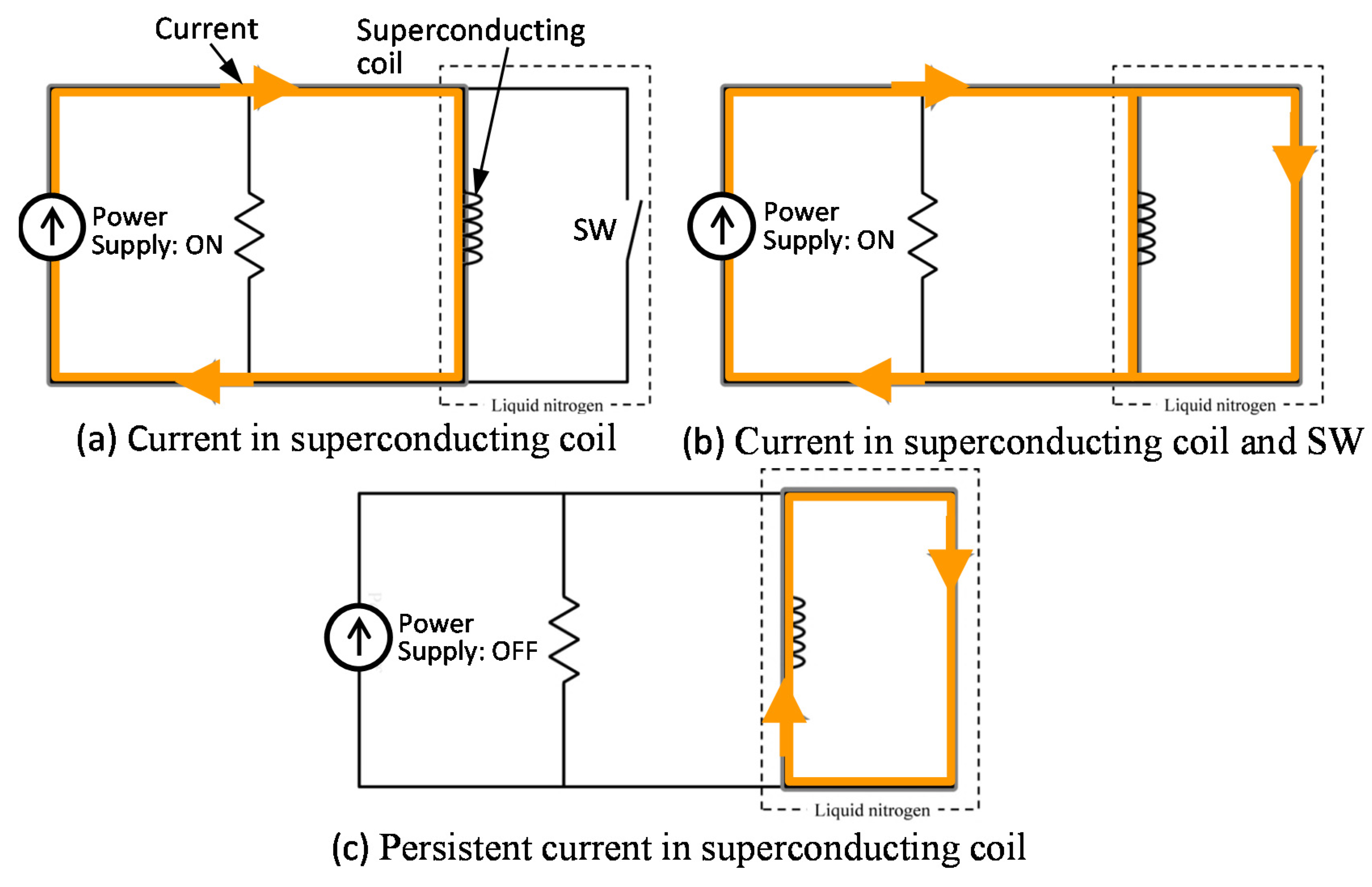
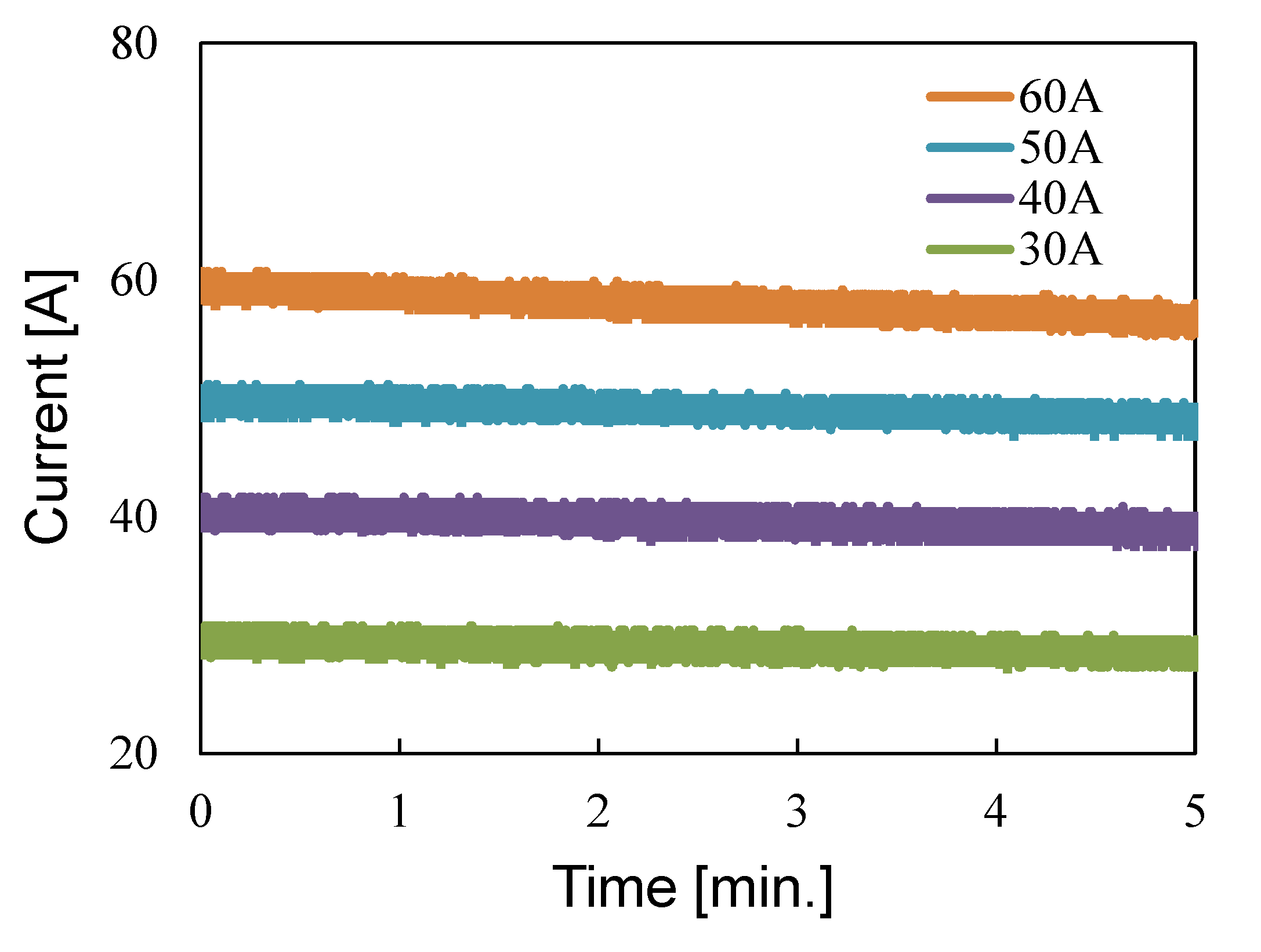
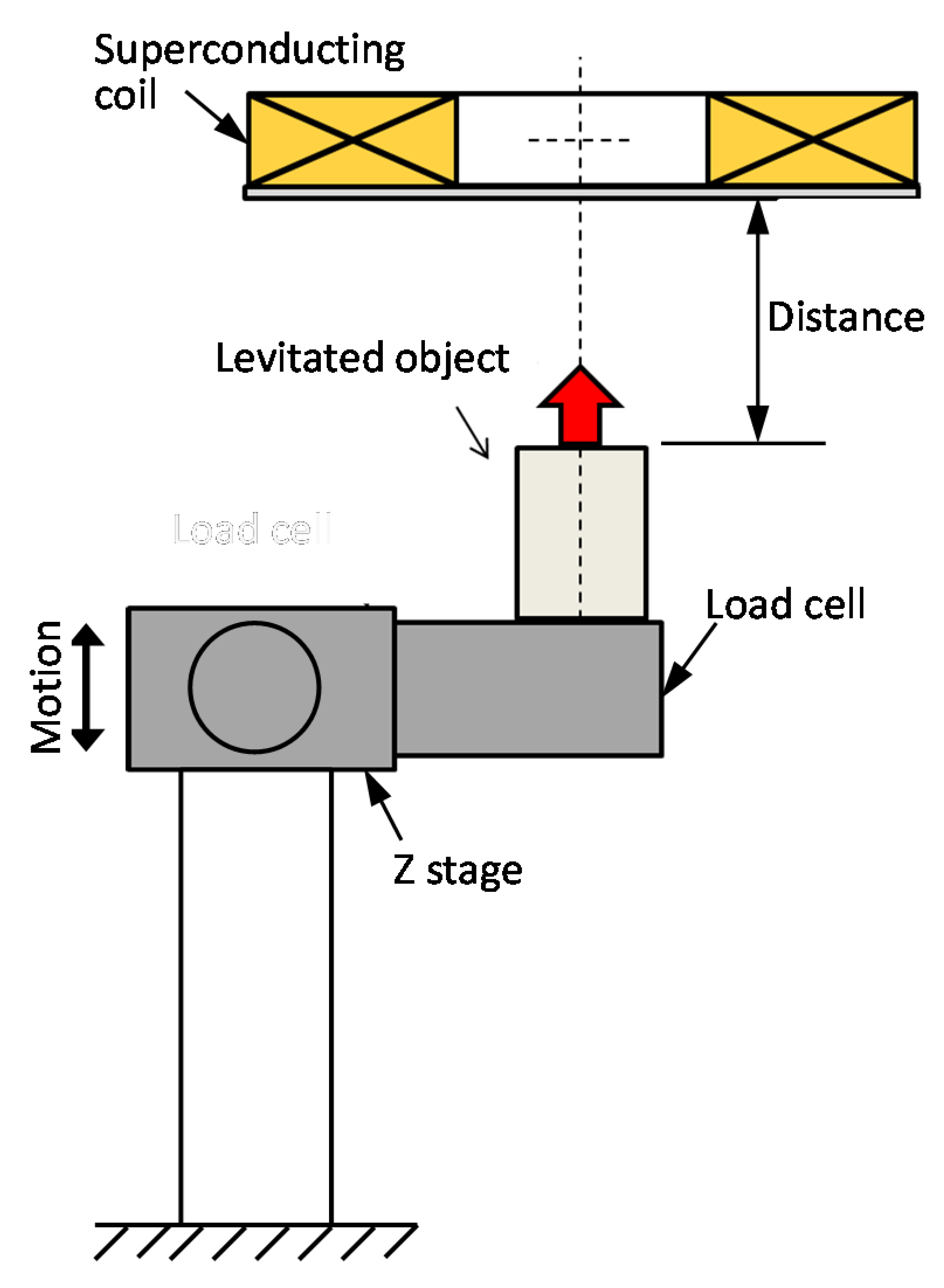


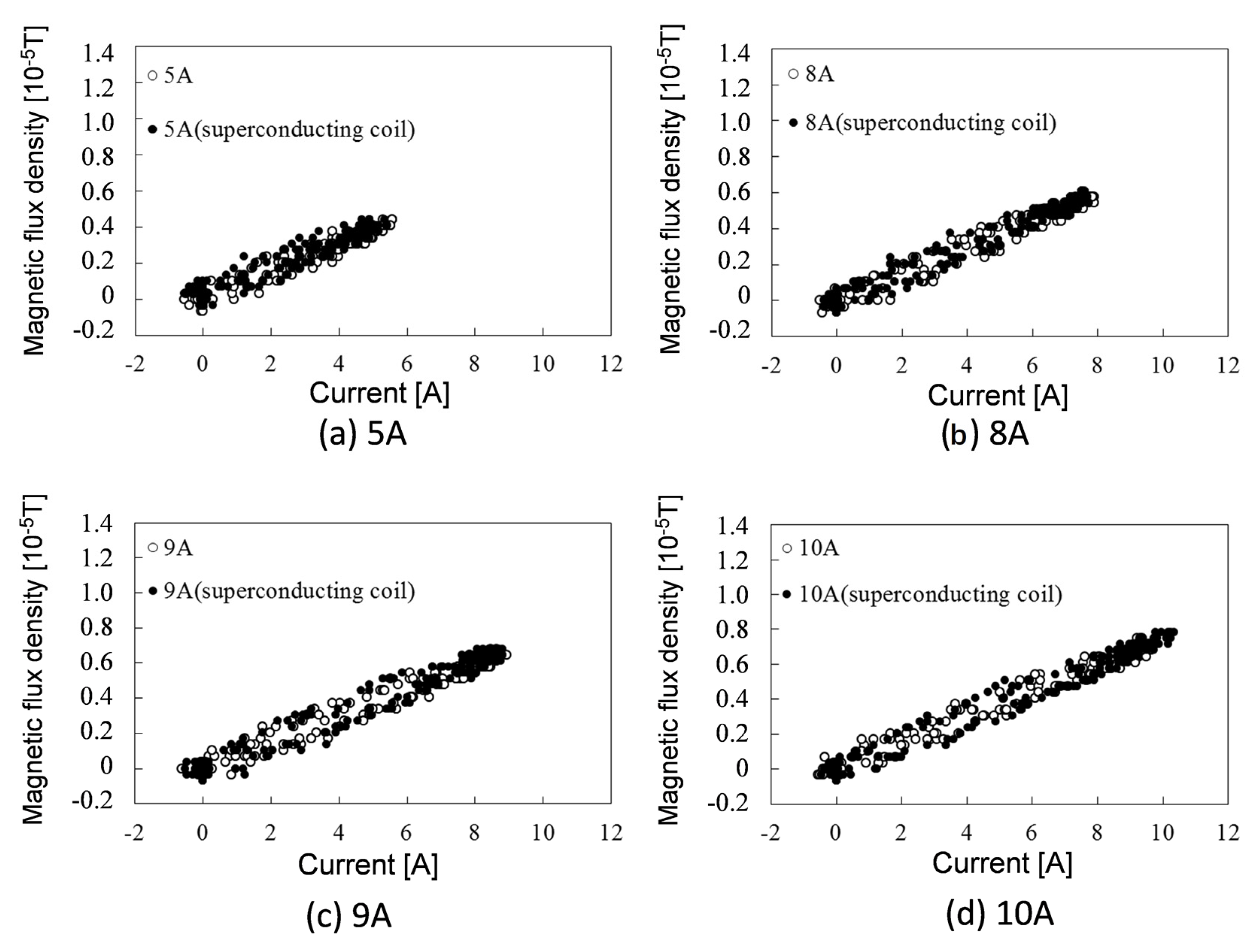
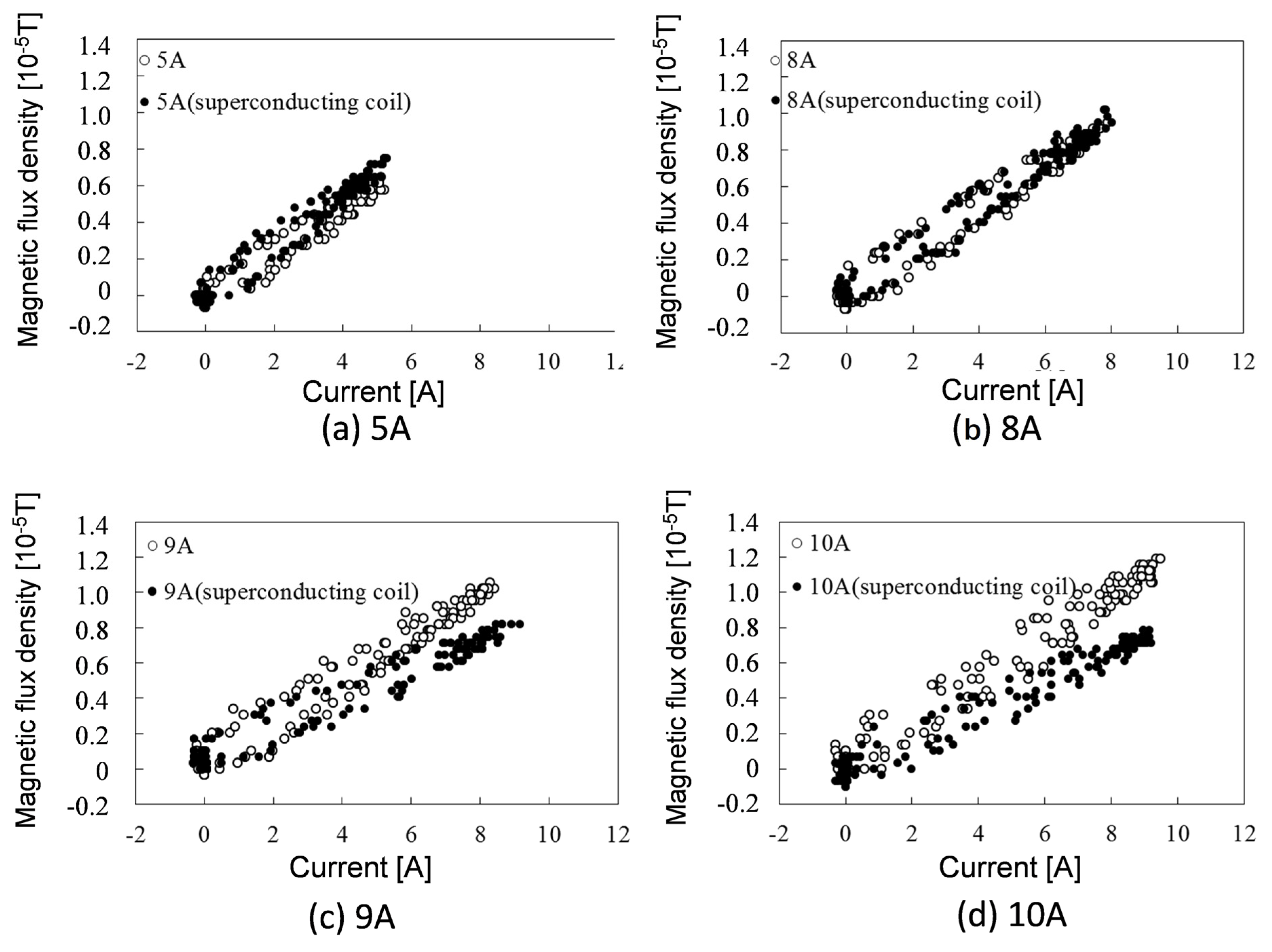
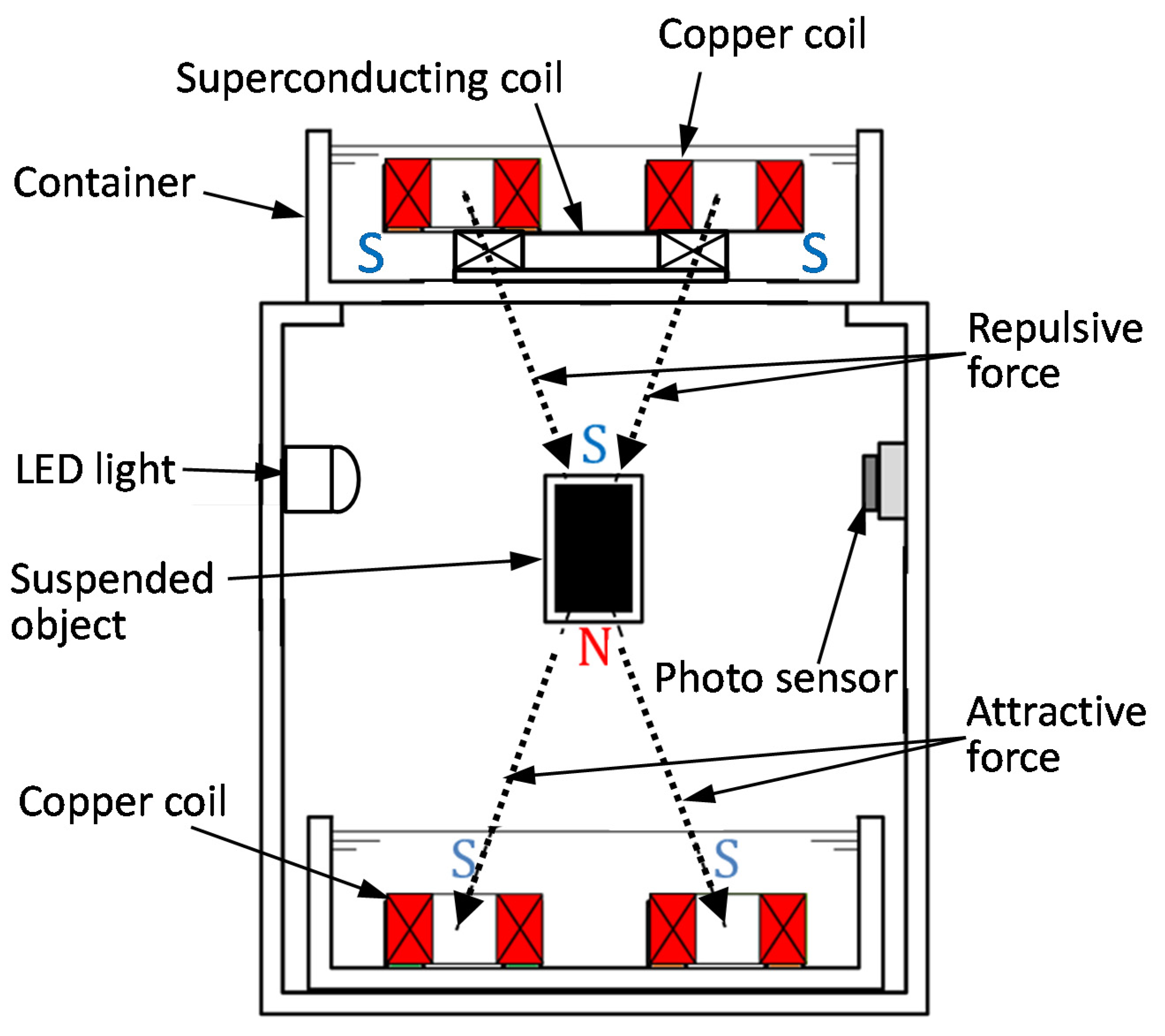
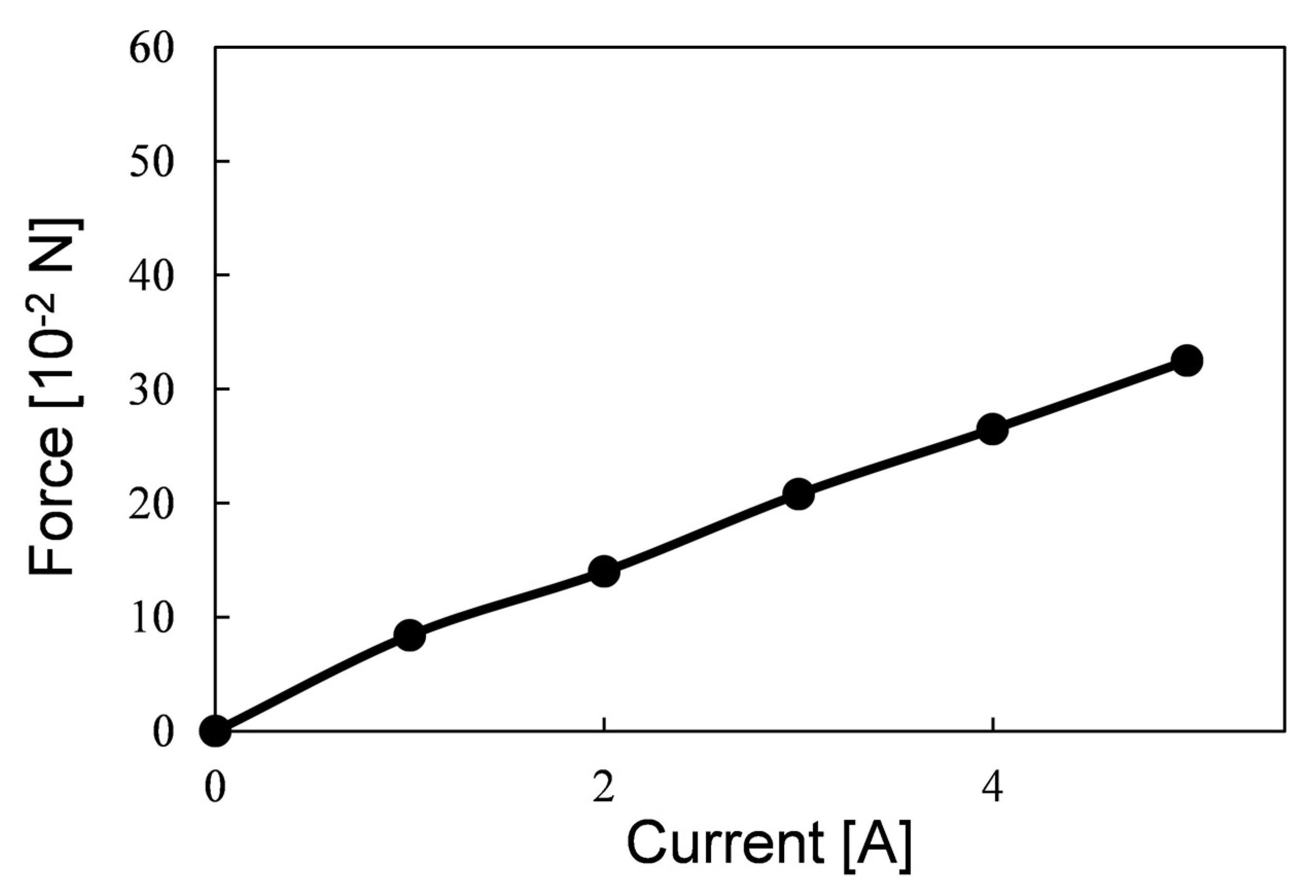

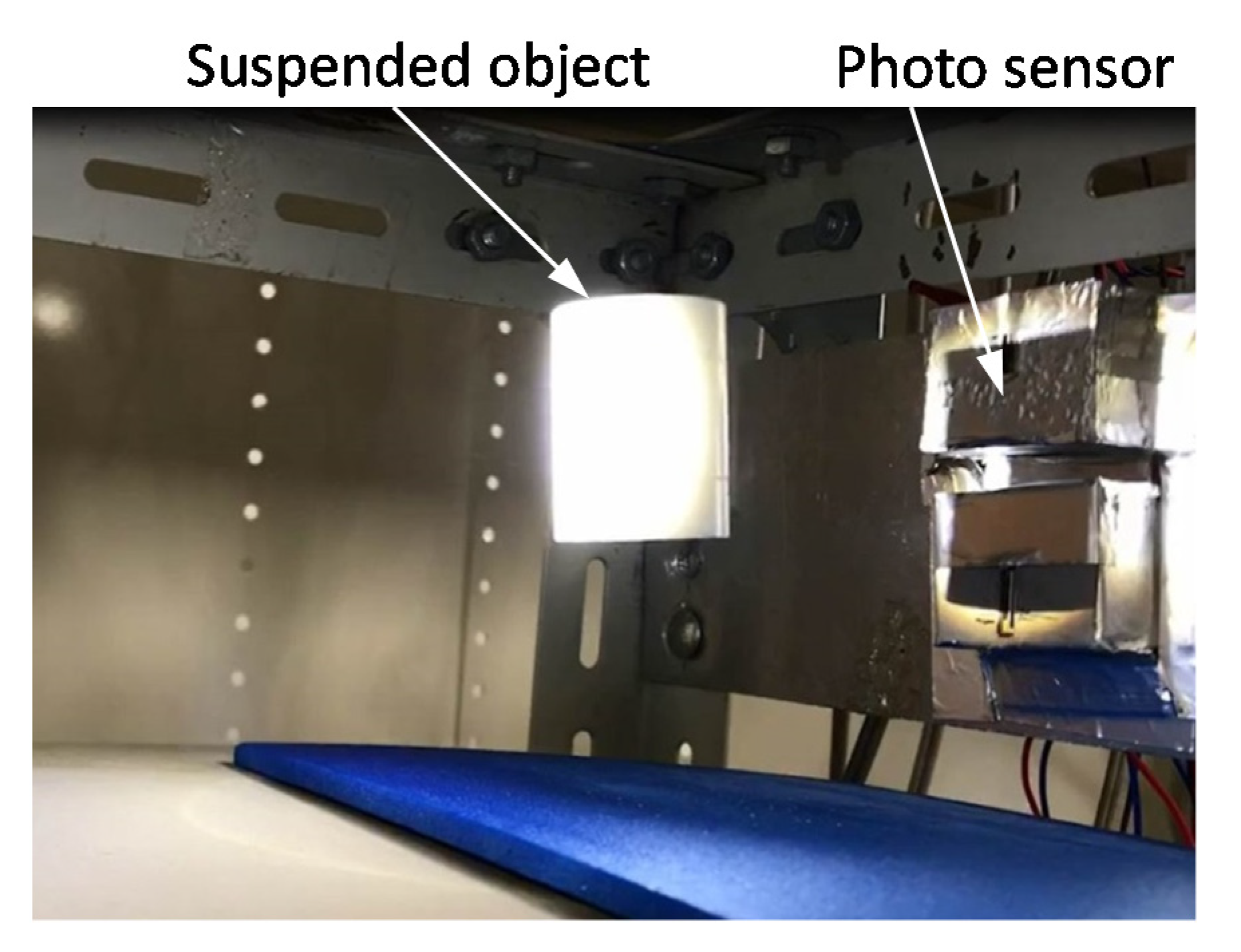


Publisher’s Note: MDPI stays neutral with regard to jurisdictional claims in published maps and institutional affiliations. |
© 2022 by the authors. Licensee MDPI, Basel, Switzerland. This article is an open access article distributed under the terms and conditions of the Creative Commons Attribution (CC BY) license (https://creativecommons.org/licenses/by/4.0/).
Share and Cite
Komori, M.; Imada, S.; Nemoto, K.; Asami, K.-i. Magnetic Suspension System with Large Distance of 82 mm Using Persistent Current in Superconducting Coil. Actuators 2022, 11, 48. https://doi.org/10.3390/act11020048
Komori M, Imada S, Nemoto K, Asami K-i. Magnetic Suspension System with Large Distance of 82 mm Using Persistent Current in Superconducting Coil. Actuators. 2022; 11(2):48. https://doi.org/10.3390/act11020048
Chicago/Turabian StyleKomori, Mochimitsu, Shun Imada, Kaoru Nemoto, and Ken-ichi Asami. 2022. "Magnetic Suspension System with Large Distance of 82 mm Using Persistent Current in Superconducting Coil" Actuators 11, no. 2: 48. https://doi.org/10.3390/act11020048




